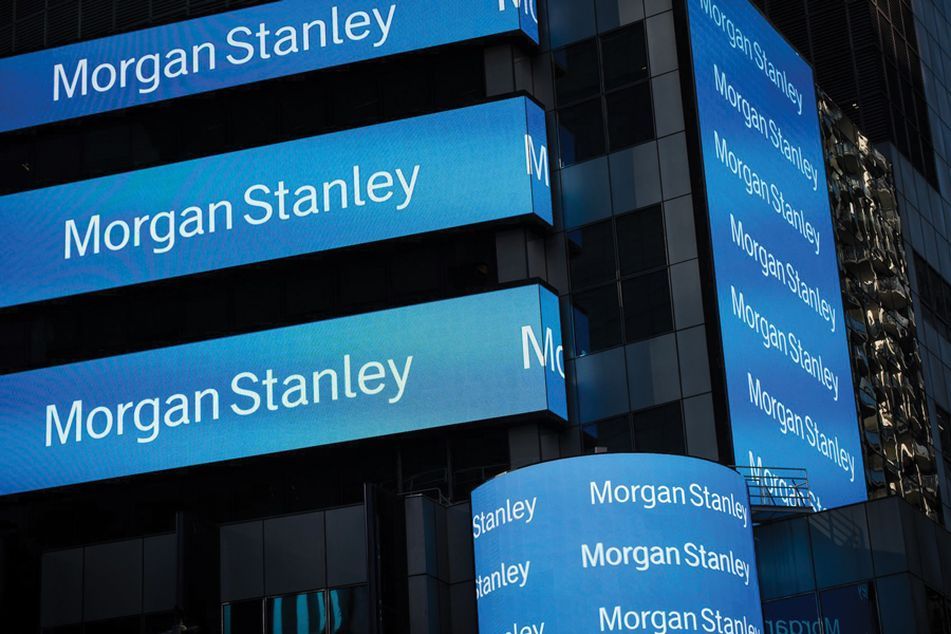Morgan Stanley ESG ETFs get the cold shoulder

Critics say Morgan Stanley's big launch of six Calvert ETFs was poorly timed in an environment where ESG has become a political football.
It’s only been a month, but the early returns aren’t looking great for Morgan Stanley’s big push into the ETF space with six Calvert-branded funds offering exposure to ESG strategies.
With the assets across the six funds ranging from $19.4 million to $39.9 million and combining to total just $152.8 million, it’s safe to assume this probably isn’t the debut the $1.5 trillion asset management complex was hoping for. Subtracting the $20 million worth of seed funding for each ETF, the six-fund suite has grown by less than $33 million.
“It’s been a month and these ETFs have mostly been ignored by investors,” said Nate Geraci, president of The ETF Store.
“I’m surprised Morgan Stanley didn’t have a better plan to make a bigger splash into the ETF space,” Geraci said. “They showed up at the ETF party without any beer.”
Hindsight being what it is, critics are saying Morgan Stanley Investment Management, which includes Eaton Vance and Parametric, along with Calvert, jumped on the wrong horse for its initial push into the ETF space.
While ESG had a stronger run leading up to last year, the category has quickly fallen out of favor with investors and has increasingly become a political football in the middle of larger social and environmental debates.
“Things could certainly change in a hurry, but the way I’m viewing this is if Morgan Stanley can’t find success in ESG ETFs with a brand like Calvert, then nobody can,” Geraci said. “This could be the death knell for ESG ETFs.”
Sumit Roy, senior ETF analyst at ETF.com, acknowledges that ESG has become a lightening rod, but thinks it might be too early to draw conclusions based on a month’s worth of weak inflows into six ETFs.
For context, Roy said that all ESG ETFs tracked by ETF.com have combined for $710 million worth of net outflows, which puts the Calvert funds in relative line with the category.
“ESG had a free pass for many years when it was considered unquestionably a good thing with no downside, but it’s not that way anymore,” Roy said. “Morgan Stanley is clearly making a bet that ESG is going to continue to be a phenomenon.”
For its part, Morgan Stanley isn’t making any apologies for leading with Calvert and ESG, even as the asset manager fully intends to build out a deep and diverse offering of active and passive ETFs.
“In terms of the logic behind leading with Calvert, we listened to our clients and knew they wanted an ETF wrapper, and when we looked at the ESG market specifically it was very clear investors were using the ETF wrapper to a growing degree,” said Anthony Rochte, Morgan Stanley’s global head of ETFs.
Regarding the slow asset growth so far, Rochte said he’s more focused on daily trading volume and pointed to the $39.9 million Calvert US Large-Cap Core Responsible ETF (CVLC), which saw 50,000 shares traded over the last five trading days.
Rochte also said the marketing effort for the new ETFs is less than three weeks old.
“I think the flows align with our expectations,” he said. “We’re aware there’s been headwinds in the ESG space. From our experience, you can never time the market, but Calvert is a pioneer in this space, and has been doing it for 40 years.”
While it’s true that timing the launch of a fund would be difficult considering the filing and regulatory approval process, Eric Balchunas, ETF analyst at Bloomberg Intelligence, said it’s possible Morgan Stanley was trying to do exactly that.
“I guess they looked at their mutual fund flows and determined Calvert was the least unpopular brand in terms of not seeing outflows,” he said. “Calvert was their only brand treading water last year.”
Balchunas is in agreement with others watching Morgan Stanley’s move into the ETF space in that he doesn’t doubt the firm’s ability to prosper, but he also sides with others in pointing out the misstep of leading with ESG.
[More: Morgan Stanley’s Parametric moves the wirehouse into ETF management]
“ESG has a lot of problems and it’s not the same category as it was during all the hype and hoopla of two years ago when tech and growth were leading the performance,” he said. “Reality has set in and the honeymoon is over for ESG.”
As an example of how extreme things can get when it comes to the topic of ESG investing, Balchunas jokes about how just two years ago people were predicting the end of fossil fuels against the backdrop of strong returns for ESG strategies.
Then the market turned, with the technology and growth stocks that dominate many ESG strategies floundering amid a rising interest rate cycle to try and combat runaway inflation.
“More than a political football, it’s the performance that will hurt ESG,” Balchunas said. “If you were really into ESG, this shows you what it takes. You have to have a stomach for this kind of volatility.”
Regarding Morgan Stanley’s ETF business, Balchunas said Calvert was going to be converted to ETFs eventually, so it might not make much difference in the long run, but it does make for a lousy debut.
“This is a long game for Morgan Stanley,” he said. “They’ve got tons of money and resources, and if you’re going to be late to the ETF party, you want to be in Morgan Stanley’s shoes.”
Is it ever too early to start planning for taxes?
Learn more about reprints and licensing for this article.








